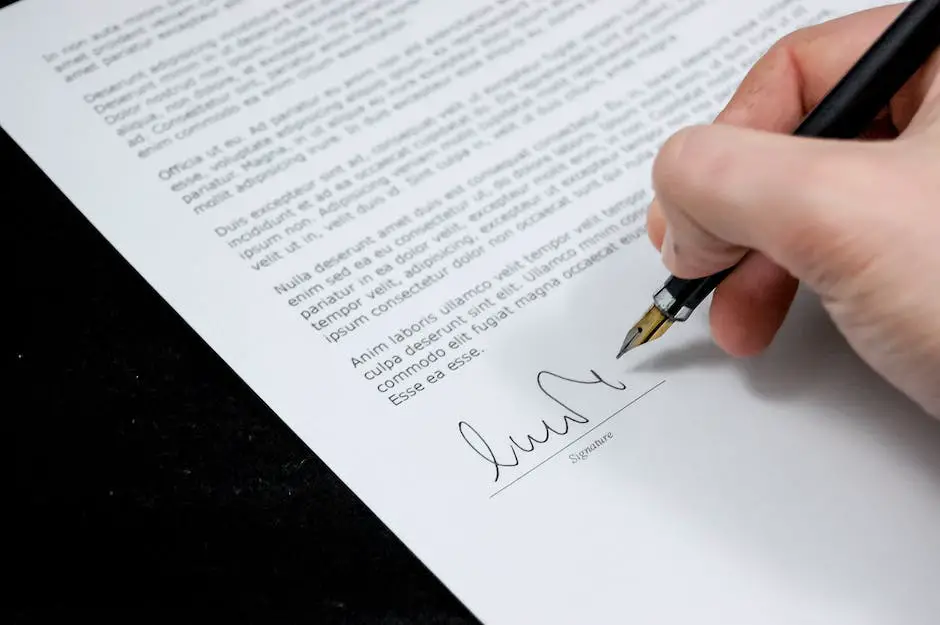Personal injury law serves as a critical avenue for those who have suffered harm as a result of someone else’s negligence, strict liability, or intentional act. This subject matter permeates a wide range of situations where an individual’s life can be significantly altered due to an injury, necessitating an understanding of the principles and procedures that govern personal injury claims.
From recognizing the diversity of personal injuries covered under the law, to comprehending the steps involved in filing a personal injury claim and the pivotal role played by personal injury lawyers, it becomes clear how intricate this legal process can be. Additionally, it is paramount to understand how damages are calculated in a quest to secure fair compensation. Equally important is being aware of common pitfalls and tips to help navigate the system effectively.
Understanding Personal Injury Law

Understanding Personal Injury Law: The Basics
Personal injury law, also known as tort law, enables an injured individual to seek compensation when someone else’s wrongful conduct leads to physical or psychological harm. It covers a wide range of situations, from accidents on the road, work-related injuries, to more complex situations involving toxic exposure.
Key to personal injury law are the concepts of negligence, strict liability, and intentional torts. These legal premises form the basis for most personal injury claims.
Negligence in Personal Injury Law
Negligence is the most common basis for personal injury claims. It occurs when one party fails to act with reasonable care or skill, causing harm to another. For a negligence claim to succeed, the injured party must prove four key elements: duty, breach, causation, and damages. The injured person must prove that the defendant had a duty to act in a certain way, breached this duty, that the breach directly resulted in the injury, and that the injury led to damages or losses.
Cars crashing due to a driver’s failure to stop at a red light or a medical professional providing substandard care are classic examples of negligence.
Strict Liability in Personal Injury Law
Strict liability applies mainly in cases involving inherently dangerous activities or products, such as dangerous pharmaceutical drugs or defective products. In these cases, the injured person does not need to prove negligence. The party engaged in the dangerous activity or producing the defective product can be held liable if the activity or product causes injury, regardless of how careful they were.
For example, a toy manufacturer could be held strictly liable if a child is injured due to a defect in one of its products.
Intentional Torts in Personal Injury Law
Intentional torts refer to actions where harm was deliberately inflicted upon another individual. Unlike negligence and strict liability, intentional torts require a clear intent to cause harm. Assaults, thefts, and trespassing are examples of intentional torts.
It’s also important to note, a personal injury case will typically need to pass through several stages including an initial investigation, file an insurance claim, filing and serving of suitable legal documentation, discovery process, potential trial, and even an appeal.
An Introduction to Personal Injury Law
In every state, there are established time restrictions also referred to as “statutes of limitations” that apply to personal injury cases. These restrictions depend on the state laws and the specific type of claims involved.
A solid understanding of terms such as negligence, strict liability, and intentional torts, and a basic knowledge of the personal injury claim process, are crucial for individuals who have suffered injuries due to others’ negligence or intentional actions, and are contemplating filing a personal injury claim.
While this article aims to provide you with a broad overview, the assistance of an experienced personal injury attorney can be invaluable in navigating the legal complexities and enhancing your chances of securing a suitable compensation.
Steps in Filing a Personal Injury Claim

The Initiation of the Injury and Subsequent Events
The journey towards filing a personal injury claim essentially begins at the moment the injury occurs. Unhesitatingly seeking medical attention immediately after the incident is of utmost importance. Regardless of the perceived severity of the injury, obtaining immediate medical care will ensure the injury is properly documented, a necessity for the subsequent claim process.
Collection of Evidence
Subsequent to the injury, the collection of evidence takes place. It’s essential to document the entire incident involving the injury. This documentation may include photographs, witness testimonies, and physical evidence from the accident scene. If applicable, CCTV footage which can corroborate your account should be sourced. Any police reports or tangible proof that may support your claim should also be collected.
Medical Documentation
Alongside evidence from the accident scene, medical documentation plays a crucial role in personal injury claims. All your injuries and their effect on your life should be meticulously detailed. Such information includes the injuries you sustained, the treatment you received, specific medications prescribed, receipts for any related expenses, and possible future medical necessities. This comprehensive medical record not only establishes proof of the injury but also verifies its severity and impact.
Hiring a Personal Injury Attorney
While it’s possible to handle a personal injury claim independently, hiring a personal injury attorney is highly beneficial. An attorney can navigate the complex legal processes, communicate with involved parties on your behalf, and advocate for your best interests. Once you hire an attorney, they will initiate the claim process, which entails sending a “letter of claim” to the party responsible for your injuries.
Dealing with Insurance Companies
The next step in the process is dealing with insurance companies. If another party is at fault for your injury, their insurance company is likely to get in touch with you. It’s beneficial to consult with your attorney before communicating with the insurance company. Remember that insurance companies, while portraying themselves as being supportive, generally aim to minimize the payout. Hence, their initial offer may not fully cover your damages. Your attorney can negotiate with the insurance company to reach a favorable settlement.
Filing a Lawsuit if Necessary
If negotiations with the insurance company are unsuccessful, your attorney might file a personal injury lawsuit. This action involves presenting your case before a court where the evidence will be examined, and a judgment made. As the plaintiff, you must prove that the defendant was negligent, which resulted in your injury.
Settling a Personal Injury Claim
Resolving a personal injury claim can be done either via successful negotiations with the insurance company, or through a court ruling. The amount of compensation awarded is typically influenced by factors such as the severity of the injury, the impact on a person’s quality of life, total medical bills, and any wages lost due to the injury. Once an agreement on the compensation amount has been reached, the claim process is officially completed with the payout of the agreed funds.
Role of Personal Injury Lawyers

The Crucial Advice Role of Personal Injury Lawyers
Personal Injury Lawyers specialize in advising individuals who allege to have been injured, be it physically or psychologically, as a result of the negligence of another party. This could be a person, a corporation, a government agency or any other entity. Working within the domain of tort law, which encompasses all civil litigation for damages or wrongful actions, they help their clients navigate the complex legal system. Personal injury lawyers explain legal terminology, inform clients of their rights, advise on the procedures related to personal injury claims, and help them make knowledgeable decisions about their cases.
Handling Paperwork in Personal Injury Claims
Another crucial role of personal injury lawyers is handling the plethora of paperwork associated with personal injury claims. This involves the preparation and submission of necessary legal documents, such as complaint papers, appeal documents, and evidence files. These documents not only commence the lawsuit but also build a strong case for the client. They review their clients’ medical records, work histories, and personal background, prepare interrogatories, and draft pleadings and motions on behalf of their clients.
Personal Injury Lawyers in Court Representation
Whether a personal injury case goes to trial largely depends on the specific circumstances surrounding the case. However, if a personal injury claim does go to court, a personal injury lawyer shoulders the responsibility of representing the client. This includes presenting the case, examining witnesses, arguing motions, and negotiating with opposing counsel. Their courtroom presence allows them to advocate for their clients compellingly, aiming to obtain the maximum allowable remuneration for their client’s injuries and losses.
Negotiating Settlements in Personal Injury Claims
Not all personal injury claims end up in court. In fact, a large number of them are settled out of court. The personal injury lawyer’s role in this scenario is to negotiate a settlement with the defendant or the defendant’s insurance company. The goal is to reach a settlement that compensates the client adequately for their losses without the need for a trial. They review settlement offers, consider probable outcomes at trial, and recommend the best course of action to their clients.
Protecting Client Interests: The Role of Personal Injury Lawyers
Personal injury lawyers are diligent advocates for their clients, striving to protect their rights and promote their best interests in every situation. This commitment extends beyond merely adhering to strict legal ethics and maintaining client confidentiality; it involves actively working towards securing the most favorable outcome. This critical role is not just part of the personal injury claim process but is key in making negligent parties answerable for their actions and ensuring justice prevails for the injured parties.
Calculating Damages in Personal Injury Cases

Determining Financial Losses: The Role of Economic Damages in Personal Injury Claims
Understanding personal injury claims requires a grasp of economic damages, the financial losses resulting from an injury. Included in this category are medical expenses, lost earnings, and property damage. Medical expenses encompass the scope of costs related to necessary medical care – hospital visits, medications, therapy, and any future treatments required by the injury.
Economic damages also factor in lost earnings, determined by the potential income the claimant would have made if the injury hadn’t occurred. This covers both past missed earnings and potential future losses, especially relevant if the injury causes any lasting disability affecting the ability to work.
Lastly, any property damaged in the incident, whether it be vehicles, appliances, or personal valuables, is accounted for. The repair or replacement costs are included in the total economic damages claimed.
Calculating Non-Economic Damages in Personal Injury Claims
Non-economic damages, which might be much more subjective, refer to non-monetary losses. These include pain and suffering, emotional distress, loss of consortium, and loss of enjoyment of life.
Pain and suffering quantify the physical and mental distress from the injuries. Impact on the person’s daily life and activities, the severity and permanency of the pain, and the future prognosis of the injury might be considered while calculating this component.
Emotional distress, which may require a professional medical diagnosis, comprises anxiety, depression or other emotional responses to the accident or injury.
Loss of consortium refers to damages for the loss of companionship, love or sexual relations due to an injury, often claimed by the spouse of the injured person but may vary from one jurisdiction to another.
Lastly, loss of enjoyment of life encompasses the lowered ability of the person to enjoy day-to-day pursuits like hobbies, exercise, and other recreational activities.
Assessing Damages in Personal Injury Claims
In personal injury claims, determining the amount of damages isn’t always straightforward. Factors such as the type and severity of the injury, the time it takes to recover, and how the injury affects the claimant’s personal and professional life all play crucial roles in this process. Additionally, considerations about the individual’s age, occupation, life expectancy, earning potential, and health condition prior to the injury must also be taken into account.
Keep in mind, each personal injury case is unique and it’s often difficult to give a definitive estimate of the potential damages, especially in the case of non-economic damages. You may come across calculators or formulas claiming to provide a rough estimate, but these must be used in accordance with case law and statutes. These figures then need to be negotiated with the insurance adjusters or validated by a jury. It is typically beneficial to have legal guidance for these intricate calculations to ensure a justifiable result.
Common Pitfalls and Tips

Getting to Know Personal Injury Claims
Personal injury claims span a wide variety of incidents. This could include things like car accidents, workplace mishaps, dog attacks, and even accidents such as slips and falls. These legal claims come into play when a person is harmed in an incident, and another party could potentially be held legally liable for the damages sustained from this incident.
Common Pitfalls in Personal Injury Claim Process
One common pitfall individuals often fall into is failing to seek immediate medical treatment after an accident. Not only does this delay in medical attention potentially harm your personal health, but also it may negatively impact your claim, as insurance adjusters can argue the injury wasn’t serious enough to warrant immediate attention.
Another common mistake is not documenting the accident properly. Having a robust collection of evidence, including pictures of the scene, injuries, and damages, witness statements, police reports, and any other relevant documentation, can strengthen your claim.
Accepting the first settlement offer from an insurer is another frequent pitfall. These initial offers are usually lowballs, intended to close out the claim quickly and cheaply.
Finally, managing a claim on your own can also be a pitfall. Navigating through the legal complexities can be a difficult task for individuals not familiar with the process.
Tips for Navigating Personal Injury Claim Process
One fundamental step in navigating a personal injury claim is to understand your insurance policy. Knowing what your policy covers can provide insight into what expenses you can expect your insurance to cover.
Additionally, being as thorough as possible with documenting your injuries and how they are affecting your daily life can help build a strong case. This might include keeping a journal of your physical symptoms and how they interfere with your daily activities.
Negotiating persistently and patiently with the insurance adjuster is another significant tip. Remember, you are not required to accept the first offer provided and have the right to negotiate until a satisfactory resolution is reached.
Maximizing Personal Injury Claim Potential
Working with an experienced personal injury attorney can often significantly maximize your claim potential. Legal professionals are skilled at negotiating with insurance companies and can guide you to make the right decisions at each stage of your claim process.
It’s important to be completely honest and as detailed as possible when discussing your accident and injuries with your lawyer. This enables them to understand the full gravity of the situation and advocate for you effectively.
Another crucial factor is timing. It’s essential to file your claim as soon as possible. Waiting too long to file could lead to your claim being dismissed due to the expiration of the statute of limitations.
Proper care, patience, and legal advice can guide you in navigating personal injury claim processes effectively, maximizing your potential for a satisfactory resolution.

Having explored the depth of personal injury law, the steps for filing a claim, the significant function of personal injury lawyers, the complex process of calculating damages, and the key tips to avoid common pitfalls, it becomes evident that the pursuit of a personal injury claim requires strategic planning and informed decisions. To facilitate a successful resolution, it is critical to pay attention to every detail, collaborate effectively with your attorney, and keep an open line of communication with all parties involved. As we navigate our lives, having a grasp of these aspects not only prepares us to handle any unfortunate experiences but also empowers us to help others who might find themselves in similar situations.



